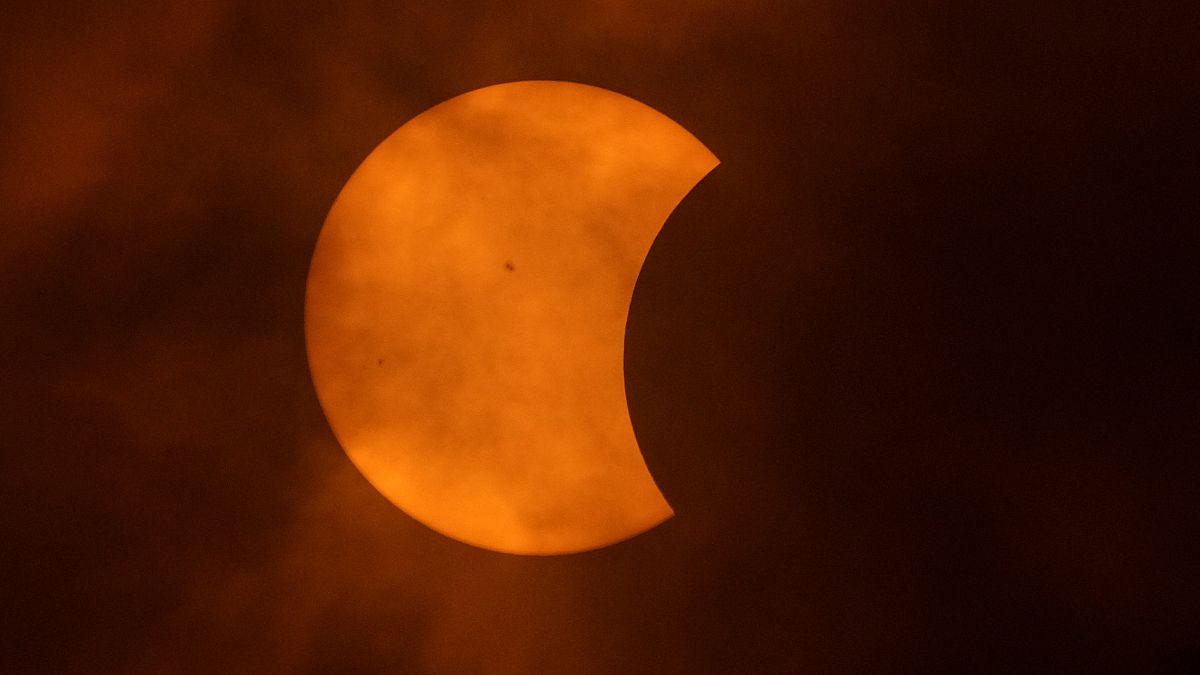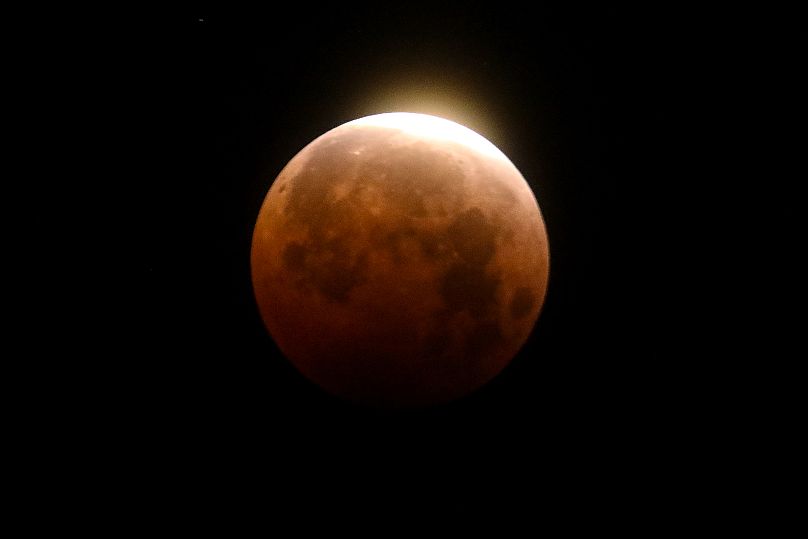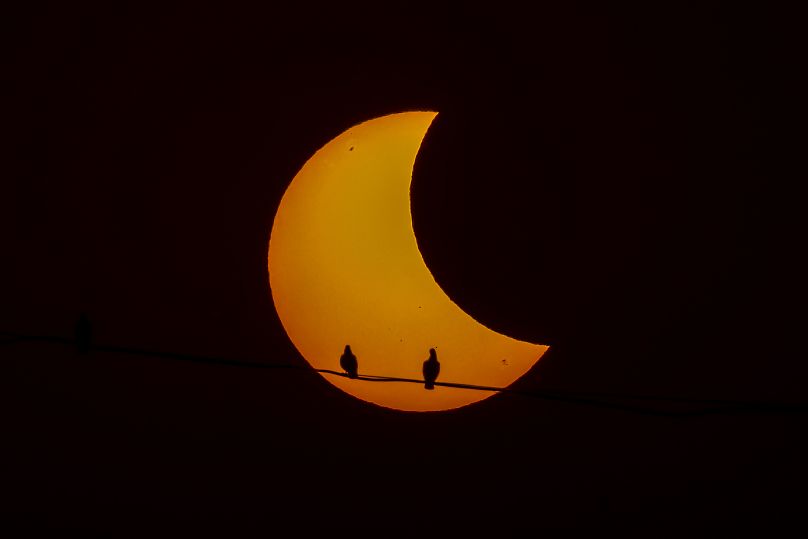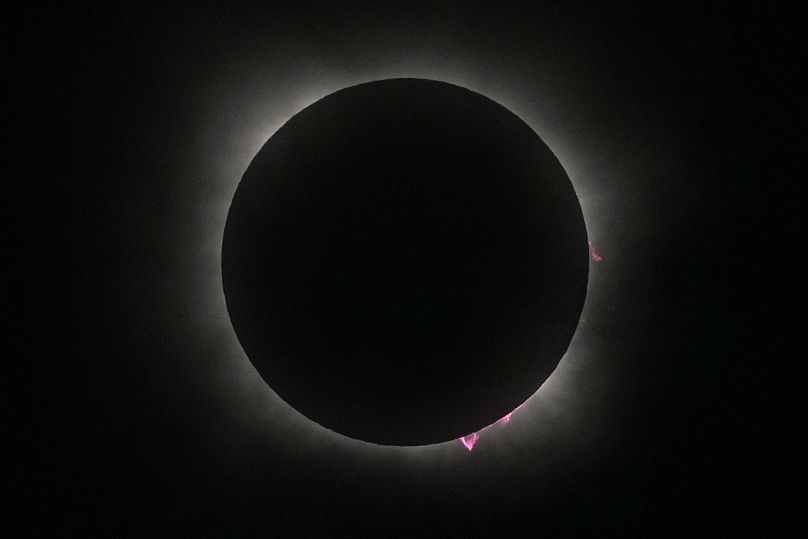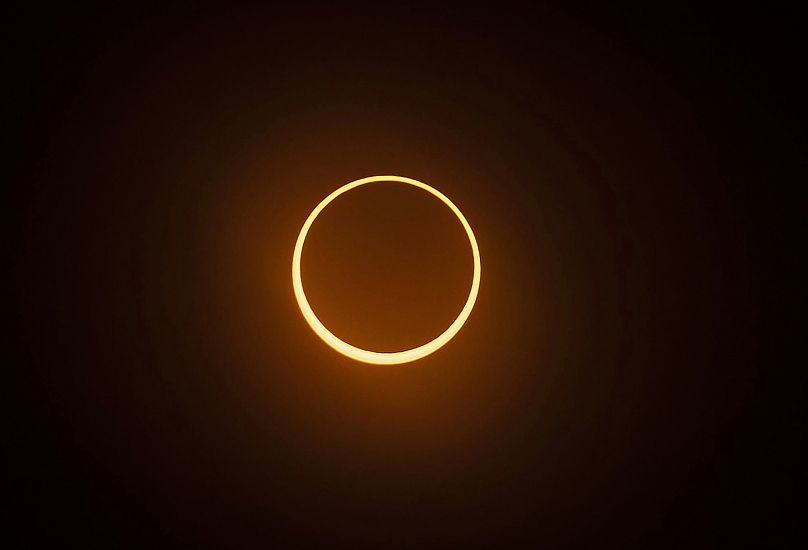Here's a look at the upcoming solar and lunar eclipses in Europe to watch out for.
Millions of spectators took in the jaw-dropping darkness of the total solar eclipse that swept through North America on Monday.
But for those of us in Europe, who may have only been able to watch online, there will still be chances to see future eclipses.
A partial lunar eclipse will be visible in Europe, Asia, Africa, North America and South America in September of this year.
That's when the Earth lines up between the Moon and the Sun, with the shadow of the planet cast on the surface of the Moon.
A total lunar eclipse will also be visible in the Pacific, Americas, western Europe and western Africa on March 14, 2025. Unlike a solar eclipse, a lunar eclipse often lasts a few hours.
Some parts of Europe will also see a partial solar eclipse at the end of March 2025. That's when the Moon partially covers the Sun.
Meanwhile, the next total solar eclipse in Europe, which is when the Moon completely blocks the Sun, will cross the northern parts of Greenland, Iceland and Spain in 2026.
A full solar eclipse happens about once every year or two when the Sun, Moon, and Earth align.
Parts of southern Europe such as Portugal and Spain will see an annular solar eclipse in 2028, when, according to the National Aeronautics and Space Administration (NASA), the Moon passes between the Sun and the Earth when it is far from Earth.
This means it does not cover the Sun and appears as a dark disk in front of it, creating a "ring of fire" effect.
According to NASA, around two to five eclipses of the Sun occur every year, while lunar eclipses occur about one to two times a year.
